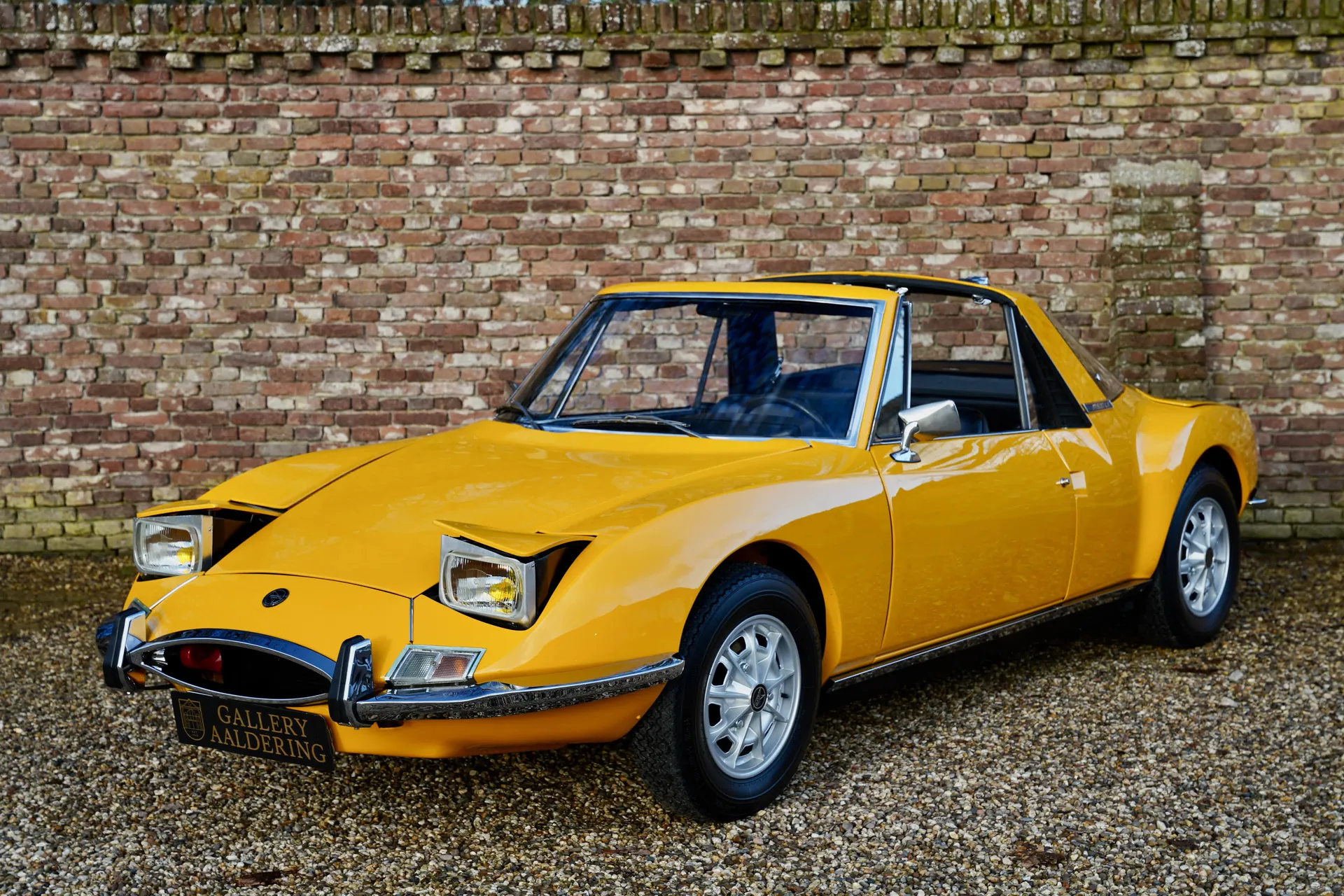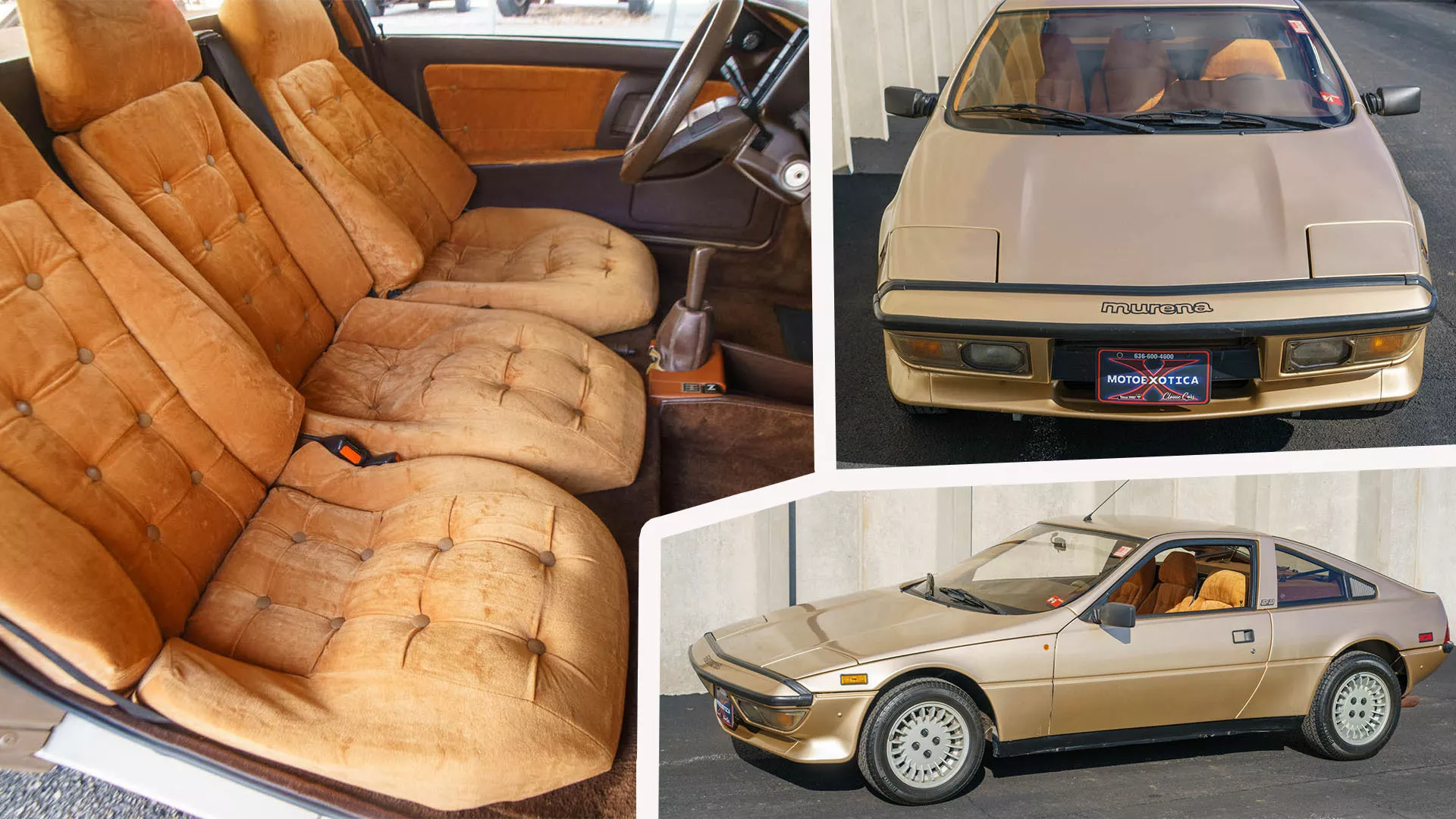Matra’s story didn’t start with cars — or even with racing.
Born in 1945, the company first built aircraft, rockets, and satellites for France’s aviation and defense industries. They conquered the skies… and then decided to conquer the roads.
In the 1960s, Matra stormed into the world of motorsport. Racing at the legendary 24 Hours of Le Mans, they didn’t just compete — they dominated, winning three years in a row (1972, 1973, 1974). Their blue-and-green cars became racing legends.
But Matra wasn’t just about winning. It was about surprising the world.
In 1967, they launched the Matra M530 — a futuristic, mid-engine coupe that looked like a spacecraft on wheels.
In 1977, they created the Rancho — the ancestor of today’s crossovers. It looked rugged like an off-roader but was built on a simple platform — and people loved it.
Then came the Murena — a sports coupe with a lightweight plastic body and three (!) seats in a row.
Matra didn’t follow trends. They made their own rules — and often broke them.
But time was harsh: in 2003, Matra’s car production came to an end. Still, their spirit lives on — a legacy of innovation, daring ideas, and cars that seemed to come straight from the future. Matra is not just a brand. It’s an adventure.
Top 5 Most Fascinating Matra Cars
1. Matra Djet (1962)

The world’s first production sports car with a mid-engine layout!
Created even before the Lamborghini Miura, the Djet was incredibly light, nimble, and surprisingly understated in appearance.
Fun fact: It was originally designed as a Formula 3 race car for the road.
2. Matra 530 (1967)

A “spaceship” on wheels with a unique design and a targa-style removable roof.
The 530 combined practicality (two trunks!) with bold engineering innovations.
Fun fact: The 530 had a mid-mounted engine and could carry four passengers — amazing for a sports car at that time.
3. Matra Bagheera (1973)

A stylish coupe with THREE seats side by side!
It looked futuristic and offered comfort no other sports car could match.
Fun fact: The Bagheera won “Style of the Year” in France in 1973.
4. Matra Murena (1980)

The evolution of the Bagheera: sharper design, a galvanized chassis to resist rust — and yes, three seats in a row again!
The Murena looked like a car straight out of the future, especially in bright red.
Fun fact: All Murena bodies were made from composite materials — Matra was ahead of its time in lightweight construction.
5. Matra Rancho (1977)

One of the world’s first crossovers!
It looked like a rugged off-roader but was actually based on a small front-wheel-drive platform.
Fun fact: The Rancho inspired many future family SUVs — it practically predicted the SUV boom!
Intresting facts about Matra:
- Aviation Roots: Matra started its history as an aviation company in 1945. It created aircraft and other aviation technologies for the French military and also worked with NASA, providing components for American space programs.
- Rocket Technologies: In the 1960s, Matra was heavily involved in developing missile systems for the French military and NATO. This allowed the company to significantly expand its expertise in high-tech areas.
- Space Programs: Matra participated in the French space program and collaborated with other European countries to create rockets and satellites. In 1965, the company developed a rocket for launching satellites, which became the foundation for further European space programs.
- Matra and Robotics Innovations: In the 1980s, Matra worked on several robotics projects. One of them involved creating robotic manipulators for industrial applications, which allowed the automation of complex manufacturing processes.
- Partnership with the European Space Agency (ESA): Matra contributed to the development of space technologies in collaboration with the European Space Agency, particularly in creating technologies for exploring distant planets and gathering scientific data from satellites.
- Defense Industry Technologies: Matra was a significant player in the defense technology market, especially in the development of electronics and systems for weaponry management, which helped the company secure important contracts with the French military and its allies.
- Matra and Microelectronics: In the late 1980s and early 1990s, the company actively developed microelectronics, creating components for both military and civilian applications. This allowed Matra to secure an important place among suppliers of high-tech solutions.

Matra — a brand that seemed to push the limits of what was possible, blending technology, aesthetics, and a passion for sports into its projects. While not as famous as some other French brands, its influence on the automotive industry was significant. Here are a few innovations that Matra introduced first and which later became the foundation for many automotive trends.
1. Aerodynamics to the Max
Matra realized in the 1960s that a car’s shape is not just for looks, but for functionality. Models like the Matra MS5 looked like they came from the future. Their low profile and smooth lines not only made the cars stylish but also reduced aerodynamic drag. This approach is now the standard for all sports cars!
2. Lightness is Strength
While others struggled with heavy metals, Matra chose the path of lightness. They were pioneers in using composite materials like fiberglass for car bodies. This allowed them to not only reduce weight but also increase strength. Did you know these same technologies became the foundation for many supercars we know today?
3. Sporty Bodywork That Looks Like an Art Piece
Matra wasn’t afraid to experiment with design, creating cars that were not just functional but also unique in their chassis construction. These weren’t just race cars; they were art on wheels. The Matra 530, with its different body variants that could be easily adapted, showed how practicality and style could go hand in hand.
4. Revolutionary Displays and Onboard Computers
While most manufacturers still relied on mechanical instruments, Matra took a bold step and began using onboard computers to monitor the car. Digital displays in the cabin were an impressive innovation. Who could have imagined that those very technologies we have in modern cars started with such revolutionary steps?
5. Sports Cars with a New Format
With its unique approaches to chassis design, Matra proved once again that a car can be more than just transportation. It can be a tool for insane speed and stability on the tracks. Their cars became the foundation for future sports and racing models. They weren’t just fast; they were incredibly controllable.
6. The Art of Creating Well-Balanced Cars
Matra put significant emphasis on the balance of the car — both physically and technologically. They combined strength, lightness, and aerodynamics in such a way that they created almost the perfect car for racing and civilian use. These concepts became the standard in the world of high-performance vehicles.
7. The Electric Revolution No One Expected
As early as the 1980s, Matra showed the world that the future of cars was electric. Yes, they created one of the first electric vehicle prototypes with great potential. Although these models didn’t become production cars, their ideas laid the foundation for modern electric vehicles.
8. Retro Style with Innovations
Let’s not forget about the Matra Rancho — a unique blend of sports car and off-roader. This “all-terrain” vehicle gave drivers the ability not only to race on the track but also to travel off-road. All these capabilities laid the foundation for new models that combine style, comfort, and the ability to go off-road.

Conclusion: Matra’s legacy in the automotive world is one of groundbreaking innovation and bold experimentation. From pioneering aerodynamics and lightweight composite materials to integrating digital displays and early electric vehicle prototypes, Matra redefined what cars could be. Their designs weren’t just about function—they were works of art, blending performance, style, and cutting-edge technology. While the brand may no longer exist, its influence is still felt in many of today’s high-performance cars and industry trends. Matra wasn’t just ahead of its time—it was the future of automotive design.

